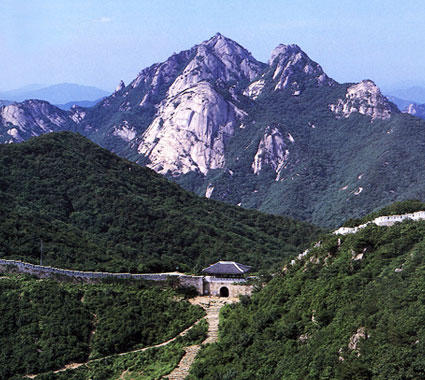- home
- Cultural Heritage
- State-Designated Heritage
- Bukhansanseong Fortress
Bukhansanseong Fortress

- Classification Historic Site
- Designated Date 1968.12.05.
- Age Three Kingdoms-Joseon
- Area 494,516㎡
- Address San1-1, Bukan-dong, Deogyang-gu, Goyang, Gyeonggi-do; Eunpyeong-gu & Seongbuk-gu & Gangbuk-gu & Dobong-gu, Seoul
Built in the 5th year of the reign of King Gaeru (132), this fortress was used for the defense of the capital when Baekje set up its capital at Wiryeseong Fortress in Hanam. In the 11th century during an invasion by Khitans, King Hyeonjong of Goryeo relocated the coffin of its founding monarch, Taejo, to this fortress.
Goryeo troops fought the Mongolian invaders in the 19th year of the reign of King Gojong of the Goryeo Dynasty here (1232). It was repaired in the 13th year of the reign of King U (1387).
After the Japanese Invasion of Korea in 1592 and the Manchu Invasion in 1636, upon hearing a loud voice ordering the rebuilding of the fortress, King Sukjong of Joseon undertook a massive project to construct a stone fortification on the ruins of an old earthen fortress.
The fortress was composed of 13 gates including Daeseomun (west gate) and Dongseomun (east-west gate) and Bungmun (north gate) and pedestals to construct the Dongjangdae, Namjangdae, and Bukjangdae command posts. Inside the fortress are 12 temples including Jungheungsa Temple, 99 wells, 22 small reservoirs, and 8 storehouses.
The remains in Bukhansanseong such as Daeseomun, command post site, site of a well, and site of the buildings of defense were practically built during the reign of King Sukjong of the Joseon Dynasty, except some earthen wall remains constructed during the Three Kingdoms Period.
This spot was of major strategic interest since the troops of Goguryeo, Baekje, and Silla often fought here for hegemony; it was also needed by the Joseon Dynasty for the defense of its capital.
* Source : Korea Heritage Service

